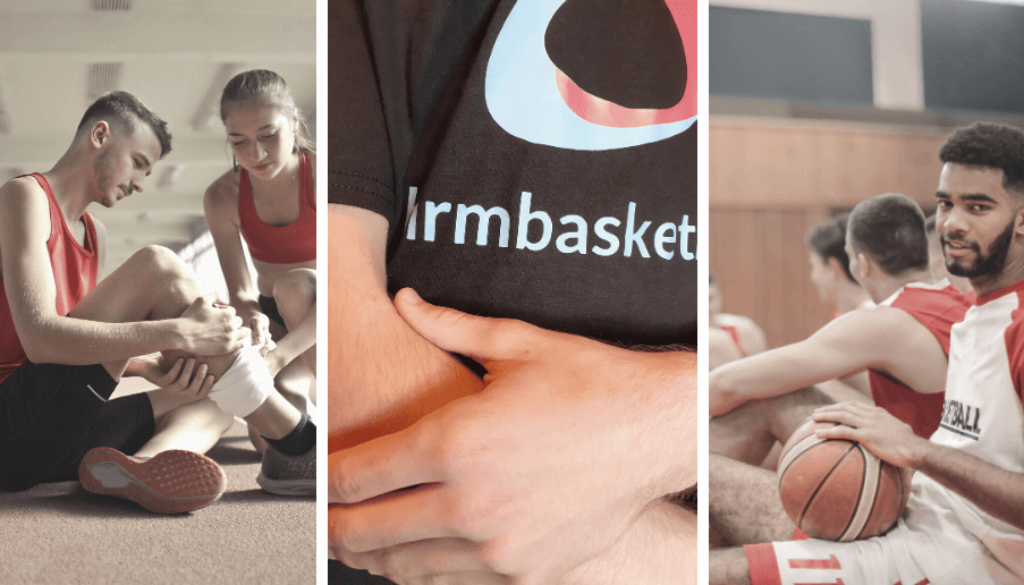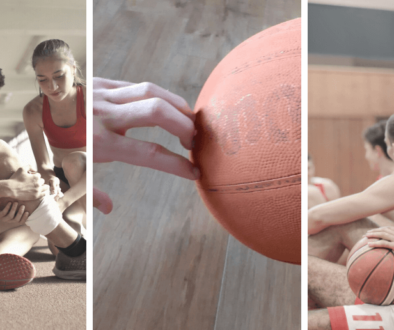Tennis elbow…or should it be basketball elbow?
Tennis elbow is actually not that common in basketballers.
However, the other evening I was speaking to a baller that has tennis elbow. That got me thinking about what a basketballer could do when managing it. The conversation also made me realise that there is a lot of myths out there when it comes to tendon issues. Therefore, I thought I would write a quick blog about tennis elbow and tendinopathies.
Tennis elbow, also known as lateral epicondylitis (although the ‘itis’ part can cause some confusion amongst both medical professions and individual with the condition), is a tendinopathy injury that affects the common tendon of the wrist extensor muscles. The wrist extensors sit in the forearm and attach via this tendon onto the humerus (the upper arm bone).
Tendinitis or tendinopathy?
I mentioned the ‘itis’ part causes some confusion. Many of you may be thinking this is just semantics. However, ‘itis’ refers to inflammation and the current understanding is that tennis elbow and other tendinopathies do not involve a classic inflammatory response. It is thought that there are some inflammatory cells involved, but not as much as was previously believed. This has led to one of the myths about tendinopathies, that it is an inflammatory condition and that anti-inflammatories will help. If you have ever had a tendinopathy and you found that anti-inflammatories were of no help, this may be why.
Tennis elbow? But I don’t play tennis!
Despite its name, tennis and other racquet sports are the cause in less than 10% of people with tennis elbow. Meaning other sports can be a contributing factor. Commonly though, it is activities involving repetitive wrist extension and grip intensive forceful elbow movements. While basketball uses repetitive wrist extension and forceful elbow movements, there are no forceful grip actions in basketball. The palm/fist is open and not tightly gripping when passing, dribbling and shooting. This might be why it is less common in basketballers and when they do have it, likely to be caused by other factors.
Tennis elbow is often caused by a sudden increase in activities such as:
-
Sports: squash, badminton, baseball, swimming, kayaking and field throwing events
-
Using shears whilst gardening
-
Using a paintbrush or roller while decorating
-
Manual work such as plumbing, bricklaying or plastering
-
Using scissors/typing
-
Playing an instrument like the violin and piano
It can also be caused by minor trauma or impact to the forearm muscles or the tendon itself. This is where tennis elbow could be caused directly in basketball, during the many bumps and contacts with players and the court.
Finally, this condition is more likely to occur in those between the ages 35-60 years of age. So I hate to say it, but the veteran ballers out there are more prone to this one.
Minimising risk of tennis elbow
When it comes to basketball the risk is already lower than other sports. As already mentioned, bumps and contact will be the most likely culprit when it comes to basketball. Therefore elbow guards may be of some use.
A sudden increase in activity is often the main cause, so taking your time to grade up activity is best. If you are thinking of building up weight training to compliment your game, start steady and gradually build. Get support with building a routine or plan.
Disturbed sleep, anxiety and depression can all be associated with increases in pain. Making sure you improve sleep and manage your mental health can minimise the risk of pain and flare-ups.
It is also worth noting that endocrinometabolic diseases (obesity, diabetes mellitus, hypertension, increased serum lipids, hyperuricemia) have been linked with other tendinopathies i.e. Achilles tendinopathy. There could be an argument that this applies to all tendons although not backed currently by research. Nutrition could have a part to play in recovery.
Unfortunately, for those veteran ballers again (and maybe some of the younger ones), carrying excess weight around the midriff could also be a risk factor. Managing and maintaining a healthy weight is important when it comes to tendinopathies.

Symptoms of tennis elbow
Tennis elbow causes pain and tenderness on the outside of your elbow. The pain can also travel down your forearm and for some into the back of your hand. Symptoms are often insidious (gradually build up) without any clear injury. Sudden increases in activity are the main cause.
The pain is often worse when you use your arm, particularly for twisting movements. Repetitive wrist movements, such as extending your wrist and gripping, can also make the pain worse.
You are more likely to experience pain in your dominant arm.
If you have tennis elbow, you will usually experience pain:
- on the outside of your upper forearm, just below your elbow– the pain may also travel down your forearm towards your wrist
- when using an overhand grip while lifting weight in the gym.
- during lifting or bending your arm with a closed/tight grip
- when writing or gripping smaller objects such as holding a pen or cutlery
- whilst twisting your forearm– think of movements such as when turning a door handle or opening a jar
- pain and stiffness when fully extending your arm
Pain, stiffness and loss of grip strength due to pain are the common symptoms. Symptoms such as heat, swelling and redness are not usually associated with tennis elbow. If you have any of these symptoms, it would be best to get it checked out with your doctor, it could be a sign of a different diagnosis. It is also worth noting that full range of movement at the elbow and wrist is usually preserved. If you are limited in the movement at either joint, it might be worth getting checked out.
Recovery and prognosis
Most episodes of tennis elbow will usually last for a few months but unfortunately for some, it can last up to 2 years. However, the majority of people (90%) will make a full recovery within a year.
The good news is that symptoms are usually self-limiting and spontaneously improve in many people. It often gets better on its own! Research also shows that recurrence rate is low so once it has gone it is unlikely to reoccur.
Treatment for tennis elbow
Now maybe time to address some more of those myths I mentioned earlier.
Myth No.1
Tendinopathies do not generally improve with rest, yet many medical professionals advice rest. There is a bit of a false economy with rest as it may help symptoms settle but many get frustrated that symptoms increase again when returning to activity. Rest doesn’t help because it doesn’t increase the tolerance of the tendon to load. Initially, modifying activity is best and being weary of activity cycles you have fallen into.
Exercise is one of the most evidenced-based treatments there is for tendinopathies. Progressive loading of the muscles/tendon is required for tennis elbow to improve. Gradually building up the load can help develop tolerance to the required loads for daily and sporting activity. Exercise often needs to be individualised, so speak to your therapist about this or drop us a message.
Myth No.2
As already mentioned, inflammation might not be as big a factor as previously thought. Therefore, anti-inflammatories are not helpful for many. They may be helpful in the early acute stage but might not be best to take in the longer term.
Myth No.3
Changes on MRI scan do not equal the amount of pain or pain someone experiences. Some people can have severe pain and no changes in their imaging whilst others may have a lot of changes and no pain. In addition, the severity of the changes seen on a scan does not mean you can’t get better or have a poorer outcome.
Even if your pain and symptoms are persisting, MRI scan and other diagnostic tests may not be helpful. Even when someone improves their symptoms and function, the changes on a scan can remain. Therefore it is best to target treatment towards improving pain and building function.
Myth No.4
Injections, massage, ultrasound and passive treatments will speed up healing and recovery times. These treatments are often adjuncts to load management and exercise and evidence is limited to them speeding up recovery. Remember, tennis elbow is self-limiting; you can throw all the treatments at it (even exercise) as it still might only get better by itself.
For some individuals, these passive treatments do help to calm down symptoms but do not be disheartened if they don’t. If they do, remember they are there to help you calm it down so you can gradually build load. Try not to fall into the trap that if the pain is better you can rush back to exercise/load.
If the pain is severe and you do have injections, be wary of multiple injections, this can be associated with poorer outcomes.
Other basic advice for tennis elbow
- Modify activity for a short period; reduce any activity that causes increased symptoms. Maintain activity where possible, included gym/sport
- Modify grip when lifting weights in the gym. Underhand and hammer grips may reduce the load on the tendon (see picture below)
- Reduce heavy lifting, forceful gripping or twisting activities if they aggravate symptoms
- If lifting a heavier object, try lifting with palms up and elbows bent. This shift the load from wrist extensor origin to the flexor
- Mix up activities to reduce repetition
- Increase rest breaks (remember not complete rest) where possible (alternate hands etc.)
- If you using tools or smaller equipment, wider handles may help (if possible).
After a short period of modified activity, grade back up. This helps the tissues build a tolerance to activity again.

Remember, these resources should not replace diagnosis and management from a medical professional. Always check before you follow the guidance.




